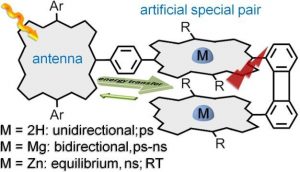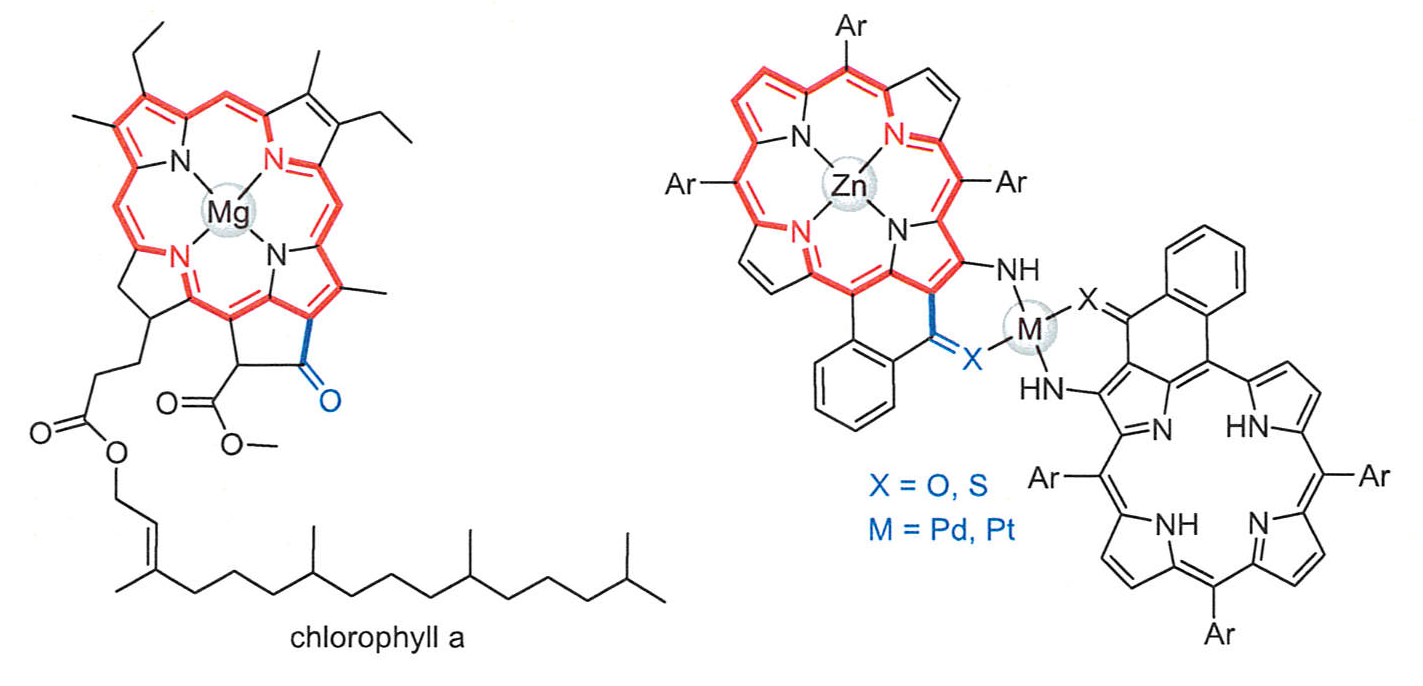Université de Sherbrooke, Quebec, Canada;
October 20th, 2017 – Fall Seminar
Time and Location: Noon in Meyerhoff Chemistry, Room 120
Host: Dr. Marcin Ptaszek
When Laboratory Designs Mimic and Even Beats Nature!
Chlorophylls (Figure 1) are considered pigments of life as they are the main light absorbing
species responsible for all antenna properties in the photosynthesis membrane of plants and
photosynthetic bacteria. In Photosystems I and II, a special pair (cofacial chlorophylls) is found in
the reaction center (RC) that photo-transfer an electron to an auxiliary in the short ps time scale.
The excitation comes, reversibly, from the surrounding chlorophyll antennas in the fs-ps time
scale. This presentation will show how to induce reversibility, more importantly cycling
(equilibrium, Figure 1), and how to accelerate the energy transfer processes, and even go faster
than Nature, and concurrently at what “price”.
Figure 1. Top: representation of the various energy transfer modes in bioinspired models in Photosystems. Bottom: Structures of chlorophyll a and dyads for ultrafast energy transfers.
- Abdelhameed, Mohammed; Langlois, Adam; Karsenti, Paul-Ludovic; Richeter, Sebastien; Ruppert, Romain; Harvey, Pierre Chemical Commun., 2014, 50, 14609-14612.
- Jean-Michel Camus, Adam Langlois, Shawkat Aly, Roger Guilard, and Pierre D. Harvey Chemical Commun. 2013, 49, 2228 – 2230.

